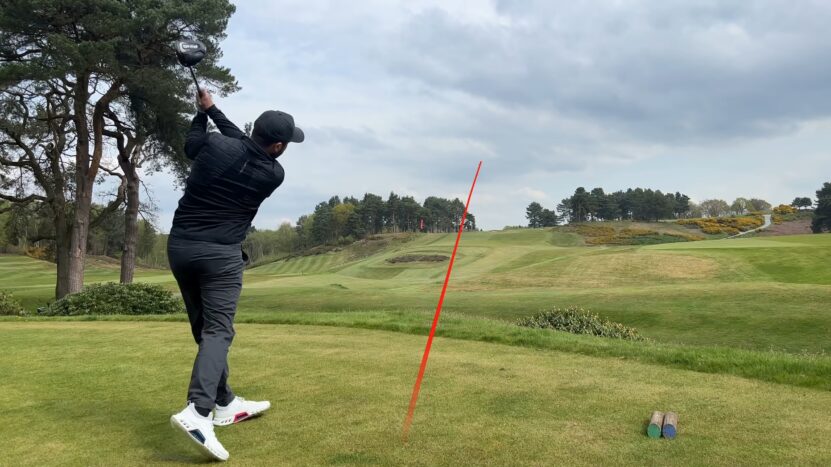Whether you’re a professional golfer or just someone who enjoys hitting the greens on the weekend, the way you grip your putter can drastically impact your game. A proper grip is the cornerstone of a good putt.
In this blog, we discuss the different putting grip techniques, exploring their nuances and detailing how you can use them to improve your game.
1. Traditional Putting Grip
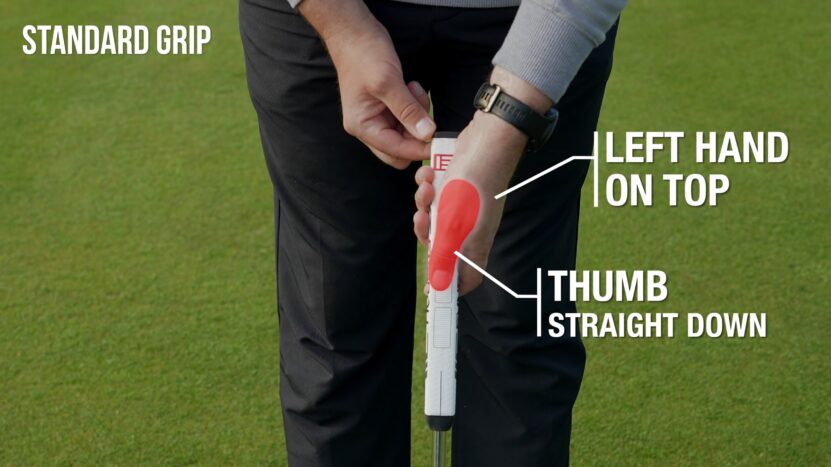
The traditional putting grip is a timeless, well-respected method that lays the foundation for all other grip techniques. It serves as the blueprint for good grip practice and provides a balanced and controlled approach to putting.
Form and Function
The traditional putting grip keeps the hands close together, with the palms facing each other and the thumbs pointing downwards. It promotes a smooth, pendulum-like stroke that minimizes wrist action.
- Form: Hands are united, promoting a sense of unity and coordination.
- Function: Minimizes unnecessary wrist movement, ensuring a smooth stroke.
The Impact of Technique
Embracing this grip technique provides a stable and reliable stroke, and its simplicity is its greatest strength. Many golfers find it easy to maintain a consistent putting stroke with the traditional grip, as it encourages a square clubface at impact, leading to more accurate putts.
Benefits and Challenges
Every grip technique has its pros and cons, and understanding these can help you determine if the traditional grip is the best fit for your game.
Advantages
The primary advantage of the traditional putting grip is its simplicity and reliability. It’s particularly beneficial for beginners as it lays down the basic principles of a good grip, and can lead to improved putting consistency and accuracy.
- Simplicity: Easy to learn and implement.
- Reliability: Provides a consistent and stable stroke.
Drawbacks
While being a reliable and straightforward method, the traditional grip can be limiting for some players, especially those looking to address specific issues in their putting game, such as reducing wrist action or correcting alignment issues.
2. Cross-Handed (Left-Hand Low) Grip
The Cross-Handed grip is a unique putting technique where the dominant hand is placed above the non-dominant hand on the club shaft. It is particularly helpful for those golfers who have a dominant hand that tends to overpower the stroke, leading to pulls or pushes.
Technique and Approach
To use the Cross-Handed grip, the left hand (for right-handed golfers) is placed below the right hand on the grip. This reversal of hand positions can help in mitigating overactive wrists and improving the stroke’s path and face angle at impact.
- Technique: The placement of the dominant hand is reversed.
- Approach: Helps in reducing overactive wrists and improves alignment.
Performance and Outcome
The reversed hand positions in the Cross-Handed grip can significantly improve the squareness of the clubface at impact, which is crucial for accurate putting. Many golfers who struggle with pushed or pulled putts find success with this grip by achieving a more consistent stroke path.
Pros and Cons
The Cross-Handed grip, while being an excellent alternative to the Traditional grip, comes with its set of advantages and disadvantages that one needs to consider.
Benefits
This grip’s uniqueness lies in its ability to promote a square clubface and a more stable and consistent stroke, especially for those struggling with their dominant hand’s influence on the stroke.
- Stability: Lessens the influence of the dominant hand, promoting a more stable stroke.
- Consistency: Achieves a squarer clubface at impact, leading to more accurate putts.
Challenges
While the Cross-Handed grip can correct certain alignment and consistency issues, it can feel quite unnatural and uncomfortable for some golfers, especially those deeply accustomed to the traditional grip, and may require a significant adjustment period.
3. The Claw Grip
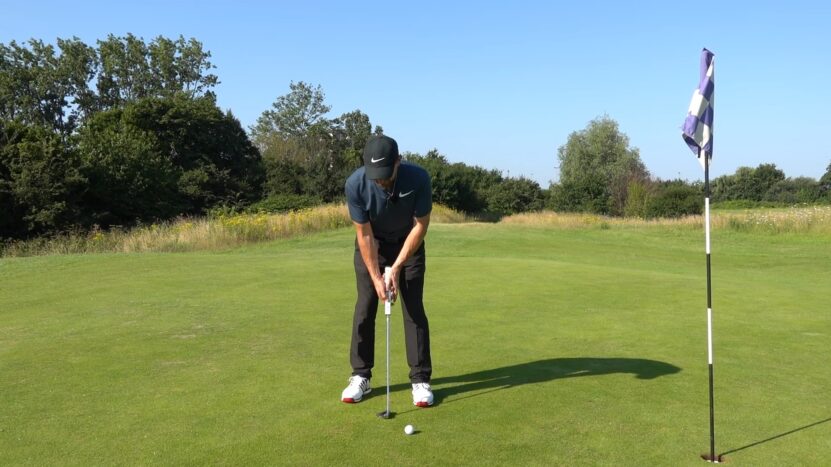
The Claw Grip is named for the way the fingers grasp the club, resembling a claw. This grip technique is known for minimizing wrist action and promoting a smoother stroke and has been adopted by several professional golfers seeking more consistency in their putting game.
Method and Application
The fingers of the lower hand grasp the grip, with the palm facing towards the target, and the thumb pointing downwards. This position reduces wrist hinge, enabling a smoother and more controlled putting stroke.
- Method: Fingers grasp the club with the palm facing the target.
- Application: Minimizes wrist action and encourages a smoother stroke.
Implications and Results
Golfers who struggle with excessive wrist action may find the Claw Grip to be extremely beneficial. It facilitates a pendulum-like stroke, making it easier to maintain a consistent and square clubface through the impact zone, thus improving overall putting accuracy and control.
Advantages and Limitations
The Claw Grip, while innovative, is not a one-size-fits-all solution. It has its distinctive advantages, but also potential limitations that golfers should be aware of.
Benefits
Adopting the Claw Grip can result in a smoother stroke and improved accuracy due to its ability to reduce wrist hinge, making it a favorable option for those struggling with traditional grip styles.
- Smooth Stroke: Reduces wrist hinge, leading to a smoother and more controlled stroke.
- Improved Accuracy: Facilitates a consistent and square clubface through the impact zone.
Drawbacks
The unconventional positioning of the hands in the Claw Grip might feel awkward for some golfers, and adapting to it can be a challenge. It may not suit everyone and could take time to see improvements.
4. Arm-Lock Grip
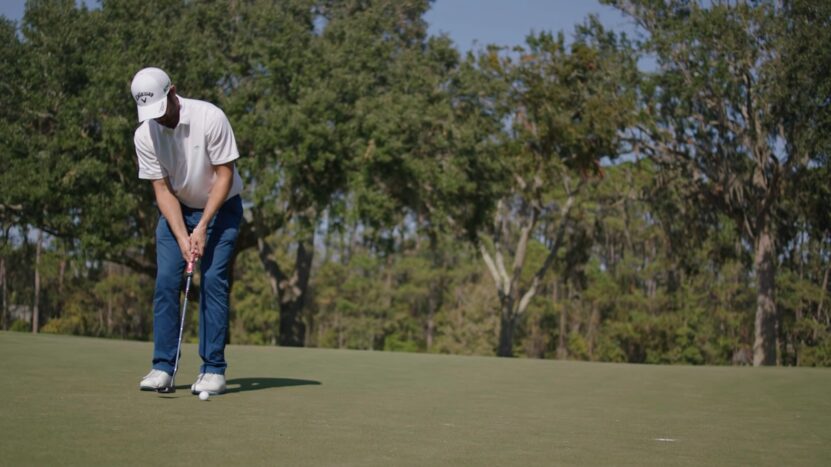
The Arm-Lock grip involves extending the putter shaft along the forearm of the lead arm, thus “locking” it, to provide added stability during the stroke. This method has been praised for minimizing hand and wrist action, making it an appealing choice for those looking for added steadiness and control in their putts.
Technique and Execution
In this grip, the putter is extended so that it runs up the lead arm, allowing for a solid connection and minimizing the wrist’s involvement in the stroke. It is crucial to have a putter with the correct length and lie angle to execute this grip effectively.
- Technique: The putter shaft is extended along the lead arm, locking it in place.
- Execution: The wrist is stabilized, allowing for more accurate and controlled strokes.
Impact and Efficiency
The Arm-Lock grip aids in achieving a stable and dependable putting stroke by limiting the movement of the wrists and hands. This stability can lead to more consistent strokes and better distance control, especially on long putts, enhancing overall putting efficiency.
Pros and Cons
Like every grip technique, the Arm-Lock grip has its distinct benefits and potential downsides, which should be considered to determine its suitability for individual playing styles.
Advantages
For those looking for added stability and less wrist action in their strokes, the Arm-Lock grip offers a compelling solution. It can improve stroke consistency and enhance distance control, making it a valuable option for many players.
- Stability: Locks the lead arm, providing a stable stroke.
- Distance Control: Enhanced control leads to better performance on long putts.
Downsides
The Arm-Lock grip, while effective, may not be everyone’s cup of tea. It can feel uncomfortable and restrictive to some players and necessitates a putter with the appropriate specifications to be implemented successfully.
5. Pencil or Prayer Grip
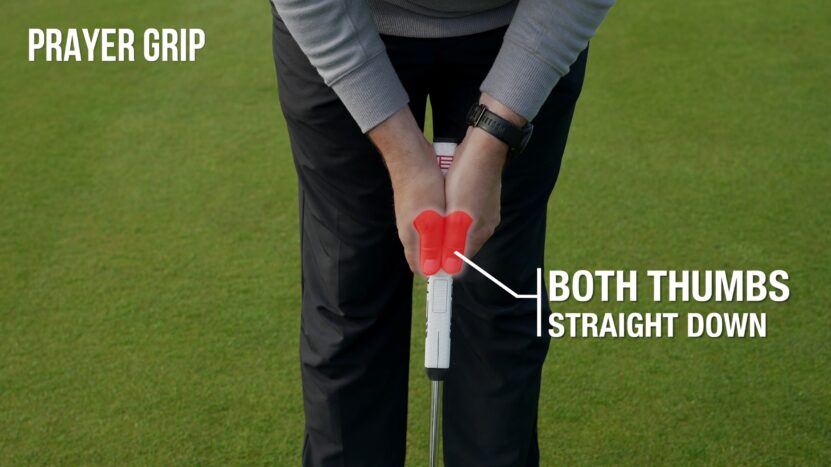
Named for the way it resembles holding a pencil or clasping hands in prayer, this grip has been adopted by players seeking a delicate touch and precise control of the greens. It is particularly effective in addressing issues related to wrist hinges and putter face alignment.
Approach and Utilization
The Pencil or Prayer Grip involves holding the putter with the hands close together, fingers pointing downwards, similar to holding a pencil or praying. This grip encourages a softer touch and precise control over the putter face, allowing for improved accuracy on the greens.
- Approach: Hands are positioned close together, fingers pointing downwards.
- Utilization: Encourages a delicate touch and precise control over the putter face.
Outcomes and Performance
By adopting the Pencil or Prayer Grip, golfers can expect enhanced control and a more refined touch on their putts. This grip’s unique hand positioning aids in maintaining a square clubface, potentially leading to more holed putts and better scores.
Strengths and Weaknesses
While the Pencil or Prayer Grip has proven beneficial to many, understanding its strengths and potential shortcomings is crucial for determining whether it aligns with your playing style and preferences.
Positive Aspects
This grip’s unique configuration allows for improved precision and a softer touch, leading to enhanced control over putter face alignment and, consequently, more accurate putts.
- Precision: The grip enables more refined control over putter face alignment.
- Soft Touch: The delicate touch achieved can significantly improve putting accuracy.
Negative Aspects
Despite its benefits, the Pencil or Prayer Grip might feel unconventional to some players, and mastering it can take time and practice. Additionally, it might not address all putting issues and may be better suited as a complement to other grip techniques.
FAQs
Can I switch between different putting grips during a game, or do I have to stick with one?
Yes, you can switch between different putting grips during a game. There are no rules against changing your grip style, as it’s considered a part of your individual technique and approach. However, finding and sticking to one comfortable and effective grip can lead to more consistency in your game.
How long does it typically take to get comfortable with a new putting grip?
The time it takes to get comfortable with a new putting grip can vary widely from golfer to golfer. Some may adapt within a few rounds, while others might take several weeks of consistent practice. Regular and mindful practice focusing on the new grip is key to faster adaptation.
Are there any specific putters that work best with the Claw Grip or other non-traditional grips?
Yes, some putters may be more conducive to non-traditional grips like the Claw Grip. Typically, putters with a flat front grip work well with the Claw Grip.
It’s important to experiment with different putter designs and find the one that feels the most comfortable and effective with your chosen grip style.
Is there any grip that is particularly beneficial for golfers with wrist pain or arthritis?
Golfers with wrist pain or arthritis might find grips that minimize wrist action, like the Arm-Lock or Claw Grip, more comfortable. Additionally, using a thicker grip can also help in reducing the strain on the hands and wrists.
Consulting with a golf instructor or a physical therapist can also provide more personalized solutions based on individual conditions.
Can changing my putting grip improve my distance control on the greens?
Absolutely! Different grips can impact how you control the putter face and subsequently your distance control. For example, the Arm-Lock grip can improve distance control by stabilizing the wrists and arms, leading to a smoother and more controlled stroke.
Experimenting with different grips can help you discover which one optimizes your distance control on the greens.
Should I use a different grip for short putts versus long putts?
While some golfers do prefer to adjust their grip based on the length of the putt, developing a consistent grip and stroke for all putt lengths is generally more beneficial for maintaining consistency and accuracy.
However, golf is a very individual sport, and what works best can vary greatly from player to player, so experimenting with adjustments and assessing their impact on your game is worthwhile.
Final Words
Exploring different putting grips can open new avenues for improvement in your putting game. Whether it’s the simplicity and reliability of the Traditional Putting Grip, the alignment correction of the Cross-Handed Grip, or the smooth, controlled stroke of the Claw Grip, each technique has something unique to offer.
By understanding the mechanics, benefits, and limitations of each grip style, you can make an informed decision on which grip aligns best with your putting needs and preferences.

